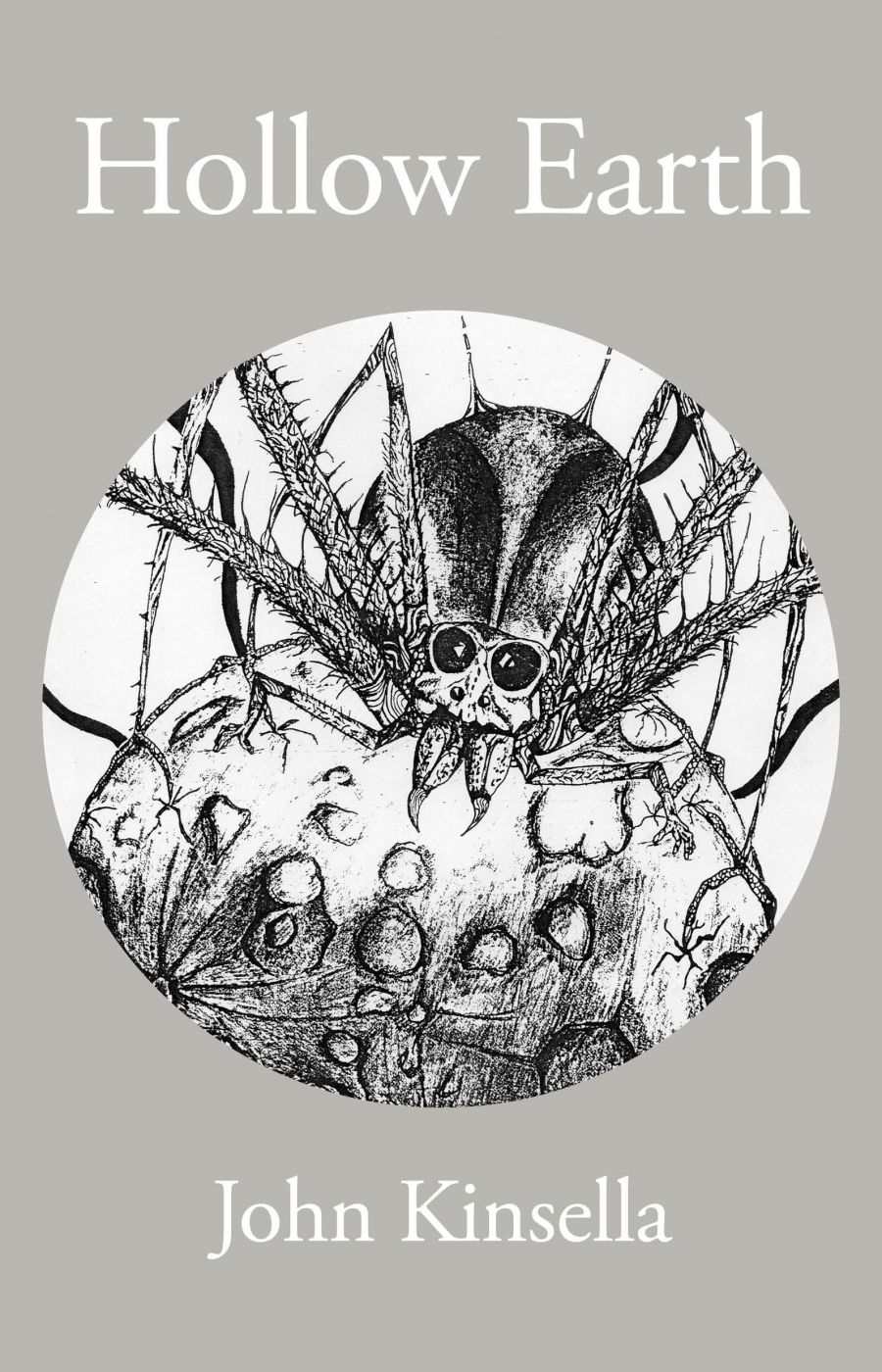
- Free Article: No
- Contents Category: Fiction
- Review Article: Yes
- Online Only: No
- Grid Image (300px * 250px):

- Alt Tag (Grid Image): Hollow Earth
- Book 1 Title: Hollow Earth
- Book 1 Biblio: Transit Lounge, $29.99 pb, 268 pp, 9781925760279
Burroughs penned seven novels set in the fictional inner world of Pellucidar, whose oceans paralleled our continents and vice versa. This was popularised, in a kitsch fashion, by the 1976 British film At the Earth’s Core, which sees Peter Cushing and American beefcake actor Doug McClure drill through a Welsh mountain with a mechanical mole and burst through into a prehistoric land of telepathic Pteranodons and scantily clad women. Burroughs’s other famed creation, Tarzan, also pays a visit to the underworld in one volume, where, from memory, he fights and bests – no prizes for guessing – one of those pesky pteranodons Kinsella’s book hews more closely to the hollow-earth notion as portrayed in Jules Verne’s Journey to the Centre of the Earth (1864) and the more obscure William R. Bradshaw novel The Goddess of Atvatabar (1892). Employing more scientific methods than Burroughs’s characters, the protagonists in Verne’s and Bradshaw’s novels access subterranean worlds via volcanic tubes and Symmes Holes – a flattening of the earth’s curvature at the magnetic poles. Kinsella’s protagonist, Manfred, finds a tunnel hidden in an Irish copper mine and falls through, fortunately landing in the sea of the unnamed place he christens Hollow Earth. No surprise to an Irish native – tunnels in my home county are rumoured to lead to the land of the Tuatha Dé Danann. You do not want to go down there.
 John Kinsella (photograph via Fremantle Press)
John Kinsella (photograph via Fremantle Press)
Kinsella’s world is not a place of high adventure. There are no lumbering prehistoric creatures to combat, or princesses to be rescued. Hollow Earth is a simple place, in many ways more advanced than our own society. Its inhabitants are genderless, or rather can adopt masculine or feminine traits according to their whim or need to procreate. Their existence is a pastoral one, respectful of the environment. They have eschewed conflict and difference, understanding fostered by telepathic communication (surely a Kinsellian wink to Burroughs’s flying reptilian overlords). Hollow Earthers also happen to be a fetching shade of pale green.
Manfred doesn’t linger in Hollow Earth, as the main thrust of the narrative follows his re-emergence on the surface with Ari and Zest, two Hollow Earthers tasked with assessing the likelihood of our mining and military ventures leading to the conquest and subjugation of the underworld. Their odyssey around the globe grants them scant comfort, although they revel in the excellent quality of our hallucinogens and stimulants.
The behaviour of surface dwellers confounds the Hollow Earthers, particularly in their treatment of the natural world. At one point Zest complains, ‘Yesterday we saw an island full of birds and flowering hedges, and now we look across the harbour, out to the island, and it is burning all over. Now we hear those fires are out of control. Are we in your “summer” now? You said it wasn’t legal. You make rules you don’t live by?’
Later, Zest is again frustrated. ‘Where is the wild? asked Zest. Everywhere, said the man. Up on the mountain? asked Zest. Yes, said the man, but many think it’s too wild up there and they want to build a restaurant for the paraglider people. A business opportunity. That’s devastating, said Zest. It is, said the man, it’s already festooned with communications towers and aerials. The devil’s legs, said Manfred quietly.’
Kinsella is an accomplished poet and prose stylist whose work often features a relationship with landscape. As such, Hollow Earth is unusual in its format. It is presented as 184 short chapters, some only a sentence in length. This may at first seem well suited to casual reading, but Kinsella’s tincture requires attention, paralleled in this spot-on analysis of a Hollywood actor’s method: ‘You mean like Nicolas Cage always jerking his neck to one side to command a sense of imminent lunacy mixed with commitment, of anger mixed with high dudgeon, of zeal mixed with unpredictability, of emotion mixed with I don’t give a damn so watch out?’
As Ari, Zest, and Manfred seek a viable opening back to Hollow Earth, they wander from one country and illicit encounter to another, a tragic, almost vaudevillian troupe that finds them supping deep from the well of narcotics and even producing online pornography to raise funds. That the internet accepts without question the sight of green subterranean people fucking in a dingy Australian share-house speaks volumes for the invention, humour, and madness of Kinsella’s left-field prose novel, a copy of which I suggest be posted immediately to Nicolas Cage’s agent.


Comments powered by CComment